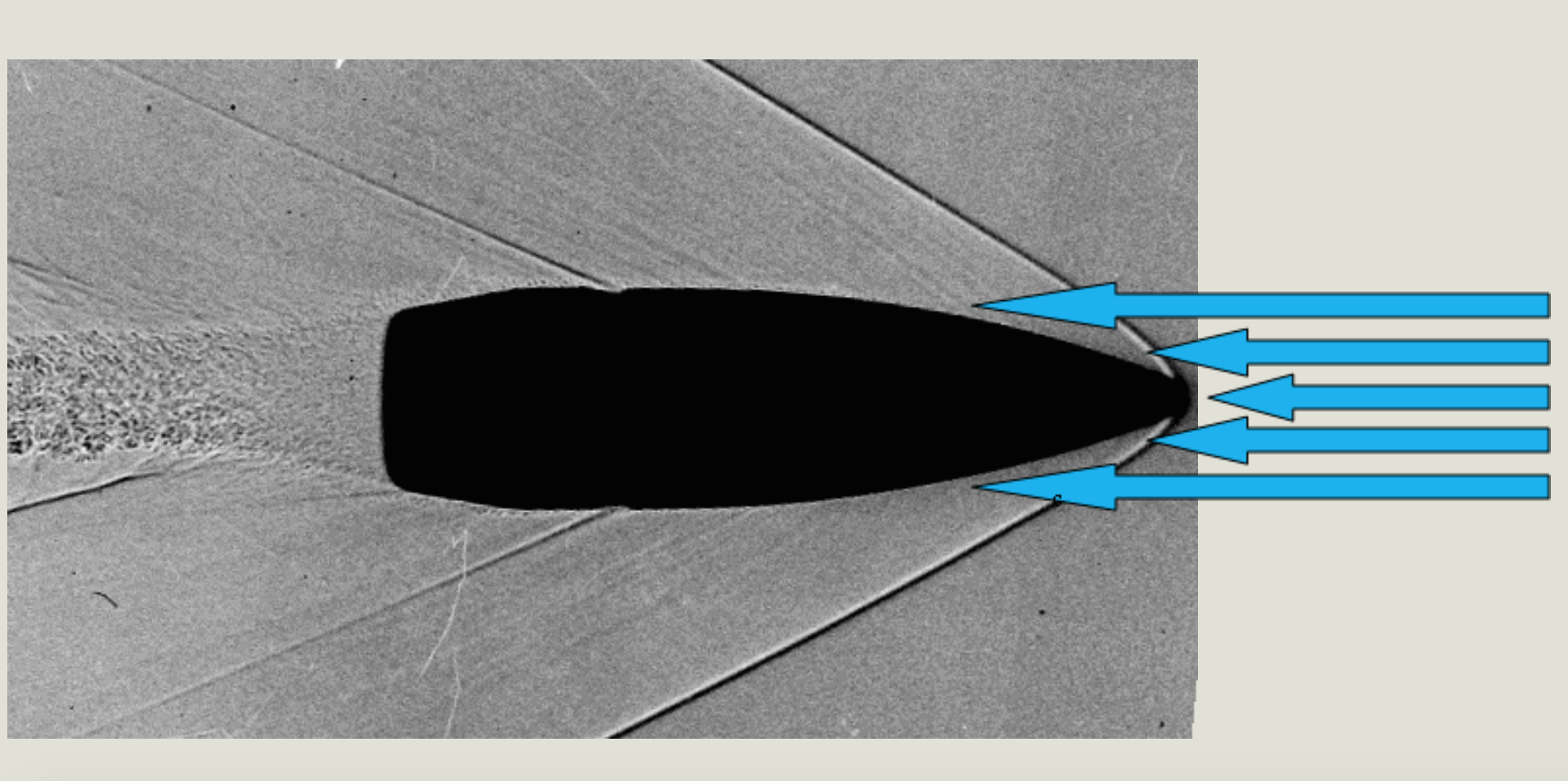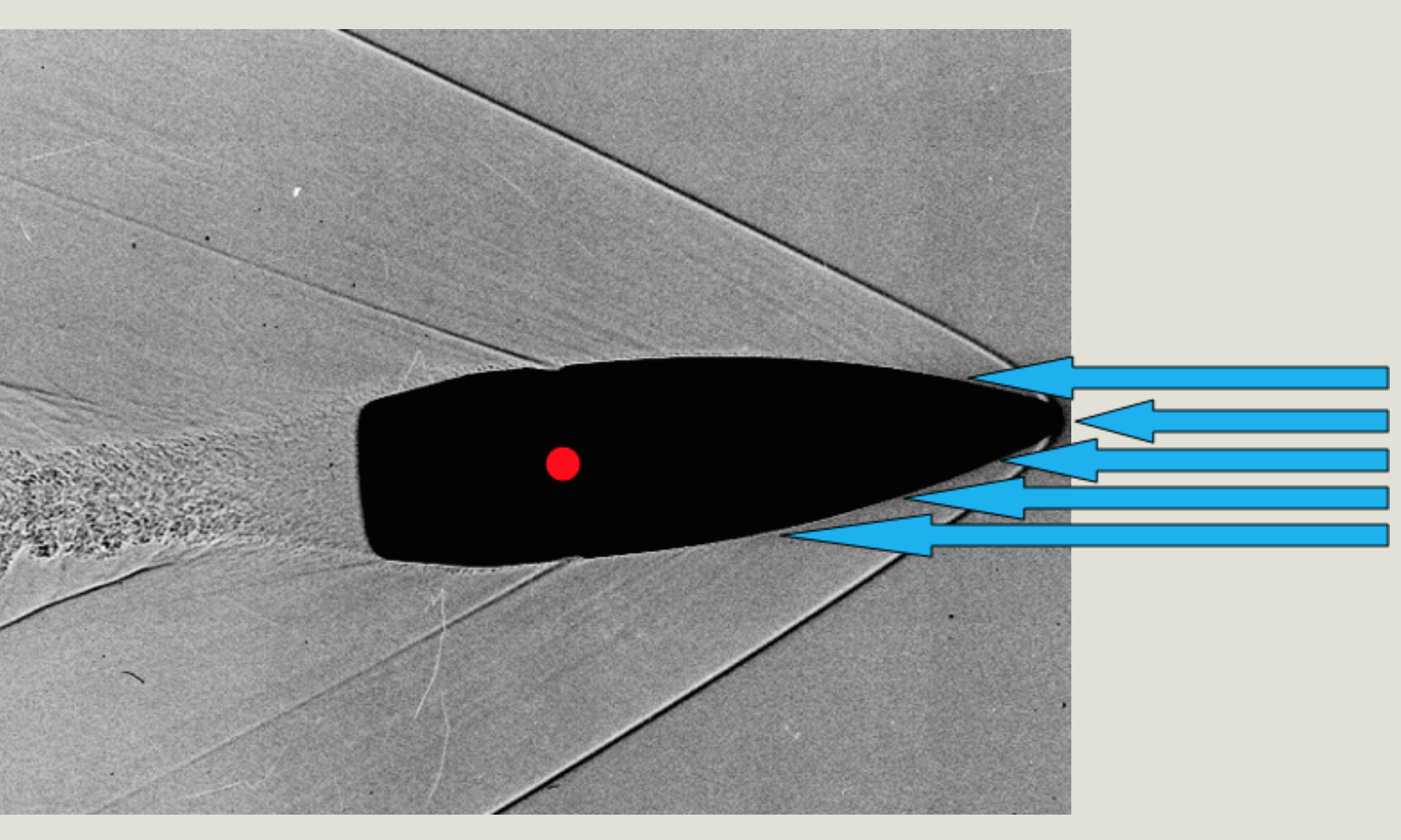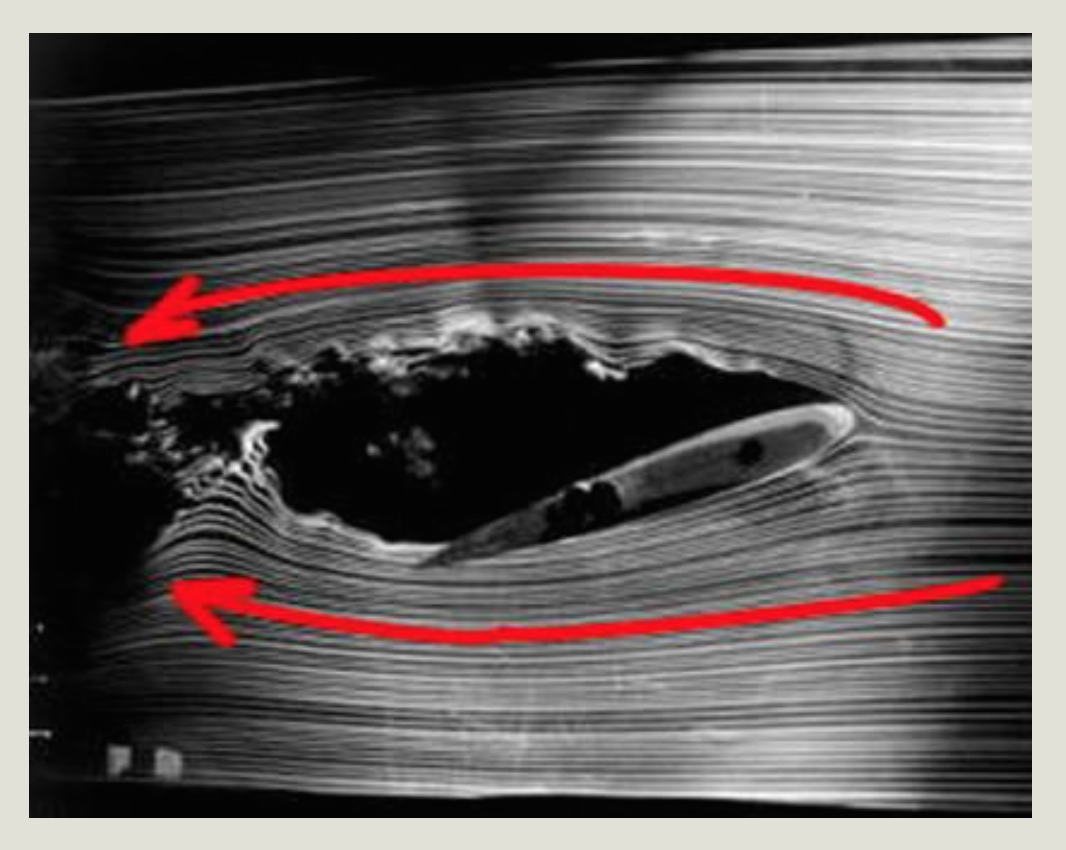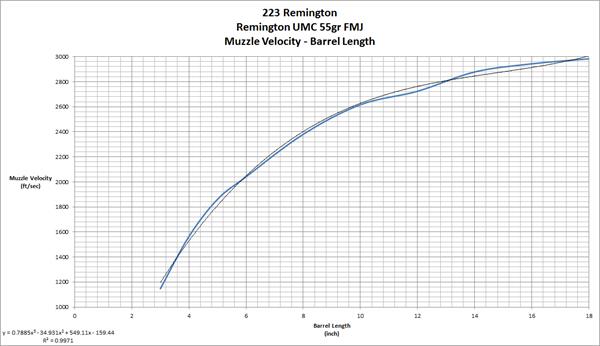Brass Fetcher Ballistic Testing: 223 Remington
Rifles chambered for 223 Remington and/or 5.56x45mm are among the most common intermediate rifles in the world. This ammunition is both lightweight, cheap and suitable for engagements to 300 meters. We compare all rifle cartridges to 223 Remington as a baseline because of the proven adequacy of the cartridge in 60+ years of usage. From a terminal ballistics standpoint, more effective cartridges exist as do less effective cartridges but 223 Remington and/or 5.56x45mm are common and useful cartridges that most shooters have experience with. Please note that 5.56x45mm firearms can shoot both 5.56x45mm and 223 Remington cartridges but 223 Remington firearms can only shoot 223 Remington cartridges.
Kinetic energy transfer per inch of penetration ranges from:
Minimally expanding 223 Remington 55gr copper hollowpoint from 16.0” barrel: 45 ft-lbf/inch
to
223 Remington 40gr varmint bullet at 3670 ft/sec from 24” barrel: 193 ft-lbf/inch.
The 223 Remington started off life as a varmint cartridge intended for the US sport hunting market and soon after evolved into one of the most prolific assault rifle cartridges in history. Most commonly found in the M16 series of rifles, the 223 Remington rifle has now become almost universally adopted as the infantry backbone of NATO armies. This adoption is for political expediency, as well as the logistical and lethality advantages that this cartridge confers to the adopting army (or private gun owner for that matter).
Many large-scale battles and personal fights have been lost due to a lack of ammunition. Excellent conditioning and experience with combat can reduce ammunition expenditures but no system is perfect and shortages can be expected to occur at any time. For this reason it is favorable to carry a weapon that has a large ammunition capacity, because spare magazines or belts are always onerous to carry in large number. I am all in favor of the larger assault rifles such as 7.62x51mm but I caution the reader that a larger weapon requires more physical fitness to carry and more energy exertion to carry the extra weight of an equivalent quantity of ammunition.
Combat experience prior to the Vietnam war seemed to suggest that hit probability was far less than ideal. This situation was remedied in several ways by the introduction of operant conditioning to the training regimen and the technical advantage of the M16 with its light-recoiling ammunition and fully automatic mode of fire. On the training side, operant conditioning was used to make firing at the enemy a reflexive response more than a conscious choice. This drove the percentage of soldiers who fired their weapon at the enemy from 25% in World War II to 95% in the Vietnam war. Understand that militaries function very similarly to other large organizations—success is largely a ’game of numbers.’ For example, 100 soldiers of average ability firing simultaneously can be expected to overcome 8 soldiers of extraordinary ability, given enough time. The other side of the coin was the technical, and this is where the 223 Remington cartridge really shines.
Accurate shooting is usually the antithesis of rapid shooting and heavy recoil exacerbates the problem. Known as an intermediate cartridge, the 223 Remington produces 1200 ft-lbf of kinetic energy at the muzzle. Compare this to the 308 Winchester cartridge which produces 2600 ft-lbf of kinetic energy. So, “Is it enough cartridge?” Let’s take a look at the Simulated Shotlines series which addresses this issue by shooting into simulant targets with material properties that are identical to the average properties of selected combat-critical areas of the body:
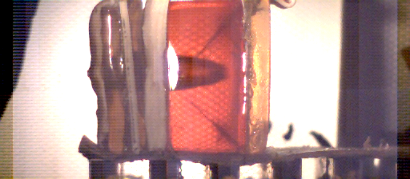
223 Remington 55gr TSX
Impacting Simulated Shotlines Chest Cavity Target

223 Remington 55gr TSX
Impacting Simulated Shotlines Upper Thigh Target

223 Remington 55gr TSX
Impacting Simulated Shotlines Pelvis Target
For most people, the answer is that the 223 Remington rifle is more than enough for self-defense and that it is not enough cartridge for ethical hunting of medium game or larger animals. In a real emergency, it would work, but considerable marksmanship and heavy softpoint bullets are required to ethically hunt such an animal. The questions to ask are not really caliber-related but more a measure to ensure that we are not carrying a ‘hammer’ and seeing all problems as a ‘nail’ that can be addressed with the hammer. A few questions to help decide if the 223 Remington is “enough” gun for you:
1. Do you routinely practice with your rifle beyond 100 yards distance? (Today I don’t, and I doubt that many people get off the 100 yard bench.)
The chart below shows the loss of bullet energy versus distance for the 223 Remington rifle bullet compared to a handgun cartridge that is widely-considered to be ‘more than adequate for self-defense’ - the 45 ACP.

Figure 1: 22 Magnum 40gr PSP vs 45 ACP 230gr JHP
The closest analogue to the 223 Remington cartridge at 300 yards is the 22 Magnum rifle at the muzzle. Here we are comparing the simulated 223 Remington bullet strike at 300 yards to the 45 ACP Federal 230gr Hydra-Shok (from a 4.25” barrel length) at 10ft distance.

Figure 2: 45 ACP vs 223 Remington
There is an equivalency between the kinetic energy of the US M193 at 325 yards and the 45 ACP handgun at the muzzle. Going strictly by the anecdotal evidence forwarded by some of the terminal effectiveness of 45 ACP handguns, the 223 Remington rifle will offer terminal ballistic advantages over and above this out to 325 yards. It would then make sense to practice regularly with ones 223 Remington rifle out to at least the 300 yard mark.
A US Military specification M4 carbine must fire a 10-shot group of M855 ball ammunition with an extreme spread not to exceed 5 inches at 100 yards in order to meet lot acceptance criteria. The M855 ammunition must meet a 4.0” spread at 600 meters when shot from a Mann barrel. M855 is good ammunition—consider how accurate your carbine actually is after testing it out, live fire, at 300 yards.
2. How much weight can you carry?
The average solider is 18 to 30 years old, is 5’ 9” tall and weighs 154 pounds. With all of the physical training that a soldier receives, the heaviest load that they can be expected to carry (without significant reduction to their athletic performance) on the march to a fight is 45 pounds. Combat loads typically are suggested to be no greater than 30 pounds.
An M4, with no accessories, weighs 6.4 pounds empty. A M14 weighs, with no accessories, 9.2 pounds. So you start out 2.8 pounds in the hole before you even load the weapon. In Vietnam, the average ammunition loadout was about 200 rounds. Assuming that these rounds were carried in M16 magazines, this is 10 pounds of ammunition. For the M14, this would be 15 pounds of ammunition. So strolling out of your door for the last time, you would be carrying 16.4 pounds of gun and ammunition with the M4 or 24.2 pounds if you are carrying the M14.
So what can you do with the extra 15 or so pounds that you have left before your equipment starts weighing you down? You will probably want to be wearing clothes and sturdy footwear. Some light body armor is a good idea too. There is all kinds of precedence that tells you that mobility is a key to survival in modern combat:
Fixed fortifications are a monument to the stupidity of man. -George S. Patton
-George S. Patton
Modern weapons and mob tactics are so powerfully employed against the individual and small group that the concept of movement and dispersion must be central to your self-protection plan in a worst-case scenario. How are you going to move quickly and effectively if you are hampered by the weight of the equipment that you are carrying for self-protection?
3. “Stopping power”
Much has stupidly been said about the “lack of stopping power” of the 223 Remington cartridge. This is driven by the need of some people to “know something” and then “say something” regardless of their verification of the veracity of the information that they are spreading as being factual. To begin, the M16 was designed in a multi-faceted effort to increase the system lethality of the solider, firearm and ammunition system. Modern combat is predicated upon the ability of small groups or individuals to move quickly and aggressively to seize advantageous positions from which to fire their weapon. Consider the case of the adversary located directly in front of you and employing a tree as cover. If you run at a 45 degree angle to the halfway point between your original position and theirs, you will be in the process of flanking your opponent and should be able to take shots at them from this position. Expert shooters or those employing full-auto firing and a modicum of luck might be able to hit a running target—so the faster you can run, the less time they will have to successfully engage you.
From the perspective of those who plan for war, war is also a ‘game of numbers.’ The concept that a wounded soldier will require 2-3 soldiers to remove them from danger and stabilize them is factual and can be expected to come into play when discussing an enemy force from most cultures. Exploiting this vulnerability was a stroke of genius when NATO was planning to fight the Warsaw Pact nations. Modern operations against asymmetric forces and fanatical individuals has called the usefulness of this design principle of the 5.56x45mm into question.
Regardless of the psychological nature of the enemy force and their ability to stabilize their wounded, it is much easier to incapacitate an attacker than it is to kill them. Consider the design of the human body for survivability and how this expresses itself in a mixed martial arts competition. Very rarely are these sorts of competitions ended on the first punch. Much more often, the fights will last several minutes and involve attacks meant to slow down the attacker and set them up for a submission or knockout later in the match. If you are facing a determined attacker, their body is much too tough and survivable to be easily knocked out.
If a bullet ‘fragments explosively’ or expands to an abnormally large size, the penetration depth will be limited. This is good from the viewpoint that the bullet will do greater damage to organs located at shallow penetration depths and this might increase the hit probability internally in the target as there will now be a bigger bullet that might clip an organ that otherwise would have been missed by a smaller bullet. This is very bad from the viewpoint that the vital organs can be located quite deep inside of the body, depending on the body position of the target.
One of the greatest tragedies in modern law enforcement history is known as the Miami Shootout and occurred in Miami, Florida in 1986. Eight FBI Special Agents were in the process of arresting two suspects who were suspected in a string of bank robberies that occurred in the area at that time. One of the suspects had passed US Army Ranger school with an Infantry MOS but was apparently serving in an Military Police unit at the time of his discharge. The other suspect was serving with him in a Military Police unit at the time of his discharge. At the beginning of the fight, one of the suspects was shot through the forearm as he fired a shotgun out of the window of his car. Shortly after this, the suspect received a handgun wound to his right forearm, head and neck. This caused his incapacitation.
The other suspect, to remain nameless, caused the majority of the wounding to the FBI agents on the scene. After emerging from the vehicle, he received a wound which would ultimately prove to be the most detrimental wound—a 9x19mm bullet that penetrated his right arm and stopped an inch short of his heart. Despite having a punctured lung and a severed brachial artery, the suspect continued to fight for four minutes, receiving further wounds in the right thigh and left foot by a 9x19mm JHP; his fourth wound was a grazing hit to the back but the fifth wound was either a 9mm Luger JHP or a 38 Special that shattered the radius bone in his right forearm which caused him to drop his handgun; the sixth wound was another hit to the right forearm from a 9mm Luger JHP which was entirely a shot through the muscles; the 7th, 8th, 9th and 10th wounds were shotgun wounds to the suspects feet with 00 buckshot; the 11th wound was a fragmentation wound from a 38 Special round that had hit car sheetmetal prior to impact and the 12th and final shot was a 38 Special wound to the collar bone, chest cavity and ending in the spine of the suspect, ending the fight.
It must be said now that the human body of a determined fighter, is very tough and difficult to stop. The situation gets worse if the adversary has training and even worse if they are physically prepared with physical fitness and appropriate weapons. This is where bullet penetration is vital—if the first shot had punctured the heart of the suspect, the fight would have been over in 30 seconds as opposed to the four minutes that it took place over. 223 Remington rifles, with 16” barrels or longer, will produce kinetic energy in the neighborhood of a 44 Magnum at the muzzle. This is a credible quantity of wounding potential but it must be delivered correctly in order to have an effect. Let’s take a look at the three ammunition types that you have available to you if you shoot a 223 Remington rifle:

FMJs that tumble early

Varmint bullets

Limited Expansion bullets
Which bullet you choose is determined by your intended application. What I always recommend is that you select one type of self-defense ammunition for your rifle—and stick to it. If you change bullet type, bullet weight or manufacturer … your rifle will shoot to some place other than where you are aiming. Get your weapon sighted in at the distance that makes sense to you, using your chosen type of self-defense ammunition. Hitting your target is essential and it is also one of the hardest things to do while you are under fight-or-flight stress. Why make this task even harder by ‘mixing and matching’ ammunition types?
Some people advise using tracer rounds as the last few rounds in a magazine to let you know that you are about to run about of ammunition. This is a great idea because people in combat will tend to get ‘target fixation’ and will focus their eyes on the target–which is exactly where the tracer bullets will be visible. You need to be focusing on the front sight while firing but target fixation is a fact of life in many situations. Terminal performance of the M856 tracer is less-than-stellar because the longer bullet resists early tumbling:
Most every store that sells ammunition will have factory varmint bullets for 223 Remington. They may or may not have the heavier, limited expansion softpoints that are desirable for self-defense. Varmint bullets will break into many small fragments upon impact, which is impressive against gelatin but each fragment does not have the mass or size to do much damage to any organ that it might hit. On narrow shotlines, like hits to the arm, these bullets should be dramatically effective. An obese attacker or an attacker holding a Weaver stance may render these bullets mostly ineffective.
The best all-around projectile type for the 223 Remington is an expanding bullet that offers limited expansion and thus deep penetration. Bullets that penetrate 12.0” or deeper in 10% ballistic gelatin can be counted on to effectively engage attackers regardless of shot angle. Second in preference are the military FMJ bullets. They are advantageous in that they can penetrate the non-vital tissues in a point-forward orientation and then turn sideways/rapidly decelerate around the depths that the vital organs would be on a majority of shotlines. Tumbling bullets work based on the fact that no bullet travels completely straight—there will always be some small angle of attack:
Figure 3 is a shadowgraph of the M80 147gr FMJ at a near-zero angle of attack. This is typical of the fully-stabilized flight that occurs at approximately 50 yards distance from the muzzle.
The pressure provided by the fluid (gelatin, badguy) on the bullet is evenly distributed over the bullet surface when the bullet is has a 0 degree angle with respect to the direction of travel.
When the bullet pitches or yaws excessively, the pressure distribution changes such that one half of the bullets surface will be exposed to most of the fluid pressure and the other half will receive very little fluid pressure. For demonstration purposes, the Center of Gravity of the M80 is estimated and drawn in red. If the angular momentum of the bullet is high enough, the bullet will begin moving back towards the 0 degree node and then to some extreme angle in the negative direction (see Figure 4).
The bullet's Angle of Attack will continue to grow as it moves through a dense medium like gelatin or water. At right is a flow visualization of an airplane wing at a high angle of attack. Notice the non-existence of airflow on the top surface of the wing. The only pressure acting on this surface is the static fluid pressure, which for the case of a gelatin block is relatively small in comparison to the pressure which acts on the underside of the wing—the static and the dynamic fluid pressure. The dynamic fluid pressure is the ‘aerodynamic’ resistance that works to turn the bullet on its side.
This is called ‘going ass-over-tea-kettles’ to use the technical parlance of a bullet designer. Once this happens, the bullet will turn to an approximately 45 degree angle and fragment (if the velocity/fluid pressure is high enough for the toughness of the jacket) or stay in one piece and travel sideways through the medium.
Figure 6 is the generalized curve for the precession or Angle of Attack for the M855 bullet. It exits the barrel at no greater than a 3 degree (pitch or yaw) angle and tends to ‘dampen out’ to nearly zero degree angle of attack by the time it travels 200 meters distance from the muzzle. This is why the M855 bullet and the earlier M193 bullets will not fragment at 200 meters distance and beyond—the bullet will likely not turn over in the target quickly enough to make a difference when the Angle of Attack is nearly 0 degrees.
The twist rate of a barrel of course decreases or increases the yaw angle. Original M16 rifles are said to have been issued with 1/14” twist barrels, which was barely able to stabilize the M193 bullet. This was fortuitous when the bullet encountered a human target—the tumbling occurred very reliably and inside of the more shallow shotlines like the arm.
Short-barreled rifles have always been popular applications of the 223 Remington cartridge, either because they are shorter and easier to jump out of an airplane with, or because they look cool. I will leave which reason explains its popularity best up to your decision. But the fact remains that the ‘infantry model’ of a rifle will come out first and is usually followed shortly by a limited run ‘paratrooper model’ which usually has a slightly shorter barrel length and has a buttstock that either collapses or folds to the side or underneath the gun. Paratroopers represent some of the most capable soldiers on the battlefield, so it is quite desirable and understandable to adopt practices that make paratroopers successful.
But does it make sense? Folding and/or collapsible stocks do not permit as sure of a cheekweld, which is essential to repeatability of firing, which is essential to marksmanship. You may find yourself having to use the buttplate as an impact tool though this practice is to be discouraged for obvious reasons. Having a sturdy butt makes a lot of sense … but what about short barrels?
Using data from BallisticsByTheInch.com, a website dedicated to determining experimentally the effects of barrel length on the muzzle velocity of a wide variety of small arms cartridges, we will take a look at the effect of reducing the barrel length on the performance of a 223 Remington rifle (see Figure 7).
The muzzle velocity that is potentially available from the 223 Remington begins to plummet around the 12” barrel length.

But it sure looks “cool” doesn’t it? Decide whether the disadvantage of short barrel rifles: decreased velocity, greatly increased muzzle flash, increased muzzle noise and the occasional noxious propellant fume in your face is worth the gain in close quarters handling ability.
